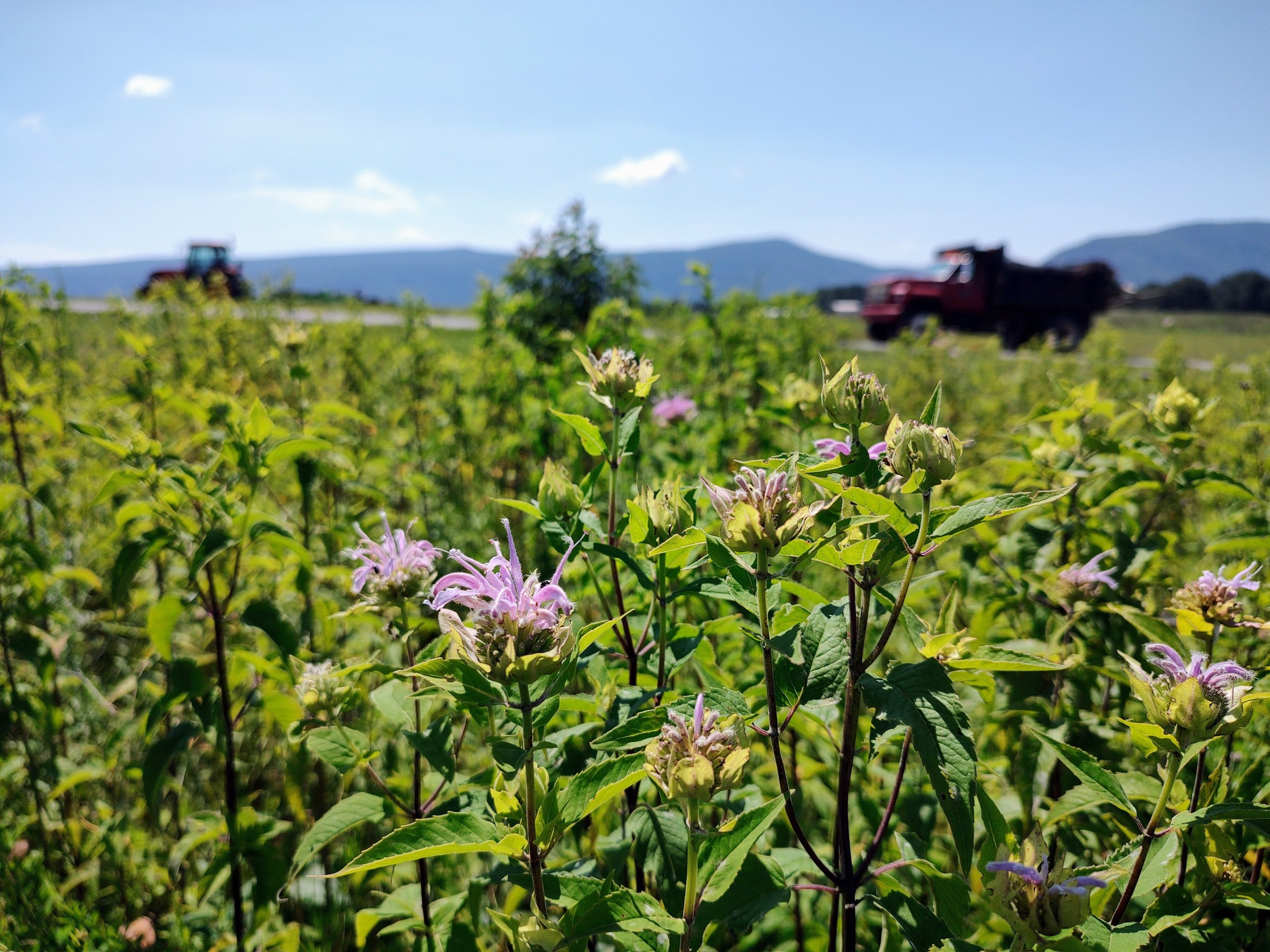July through August
Wild Bergamot
Monarda fistulosa
This week I am highlighting one of my favorite native blooms - wild bergamot. This flower is hard to describe - bold yet delicate - and has always made me think of the “truffula” trees in Dr. Seuss’s the Lorax. Perhaps a more apt comparison is one of fireworks cascading upwards and then just starting to fall back towards the Earth. Paired with other Monarda varieties, you could easily grow a stand of red, white, and blue-ish flowers that would make any patriotic heart soar! The Monardas are commonly called “Bee Balms” because they have historically been applied topically to reduce the swelling of bee stings as well as to treat wounds and burns.
It is only fitting that wild bergamot has just began blooming as we move into the 4th of July weekend, because this plant has strong ties to the history of our nation and its many peoples. Native Americans made tea with the aromatic leaves to treat ailments like cold and flu. Bee balm teas are also called “Oswego tea” after the Oswego Native American people who originally taught the English settlers how to brew the leaves into a minty drink. Wild bergamot was brewed into a “Liberty Tea” by American colonists after their rejection of imported goods at the Boston Tea Party rebellion of December 16, 1773. According to the University of Vermont Extension Office, now is the perfect time to make wild bergamot tea, just as it comes into bloom. Later the leaves can become bitter, but you can also dry leaves for future use. If you do decide that bergamot iced tea would make a refreshing addition to your Independence Day gathering, I hope you will reflect on its place in our country’s history as you enjoy this native mint.
Check out the information below to see if this native might be a good fit for your yard!
Bloom Time: July through August
Height: 3'-5' H
Cultivation: Native Virginia perennial. Best in full sun, grows in wide range of soils from rich to poor, sandy to clay, dry to moist, pH 6.8 to 7.2. Can be propagated by root division - this mint family member can aggressively colonize an area by rhizomes. Can be propagated by seed without stratification. Seeds are ripe about 2 months after bloom.
Pollination/Insect Interaction: Long-tongued bees, bee-flies, a wide variety of butterflies, skippers, hummingbird moths, and hummingbirds. Monardas are host plants to 12 moth and butterfly species. According to the Xerces Society, wild bergamot supports several specialist pollinators, including a wasp species that are voracious predators of the invasive brown marmorated stink bugs - they are welcome to the ones around my home for sure!
Wild bergamot blooming in the pilot plot at the Shenandoah County Landfill. Nothing trashy about these gorgeous flowers! And the views are simply breathtaking.
“Lance shaped leaves and double lipped flowers” sounds almost like a Shakespearean insult, but is actually one of the best descriptions that I have heard of Monarda anatomy. They bloom from the center outwards: you can see the green buds on the lower portion waiting their turn to ripen as the center flowers fall away over the course of several weeks.



